The Global Economy in Five Charts
- BFIS News
- 2024 Jan 12 19:30

Output in emerging market and developing economies (EMDEs) is set to follow a notably lower path than it did before the pandemic, with sluggish per capita growth, especially in fragile countries. The recent conflict in the Middle East has heightened geopolitical risks, and an escalation could weigh on global growth. This comes while the global economy is continuing to cope with the lingering effects of the overlapping shocks of the past four years—the COVID-19 pandemic, the Russian Federation’s invasion of Ukraine, and the rise in inflation and subsequent sharp tightening of global monetary conditions. Financial stress related to elevated real interest rates represents another source of risk to the global outlook.
Near-term growth prospects are diverging
Growth in advanced economies as a whole and in China is projected to slow in 2024 to well below its 2010-19 average pace. In contrast, aggregate growth is set to improve slightly in EMDEs with stronger credit ratings, remaining close to pre-pandemic average rates. Although overall growth is also expected to firm somewhat from its 2023 low in EMDEs with weaker credit ratings, the outlook for many of them remains precarious, given elevated debt and financing costs, as well as idiosyncratic headwinds such as conflict.
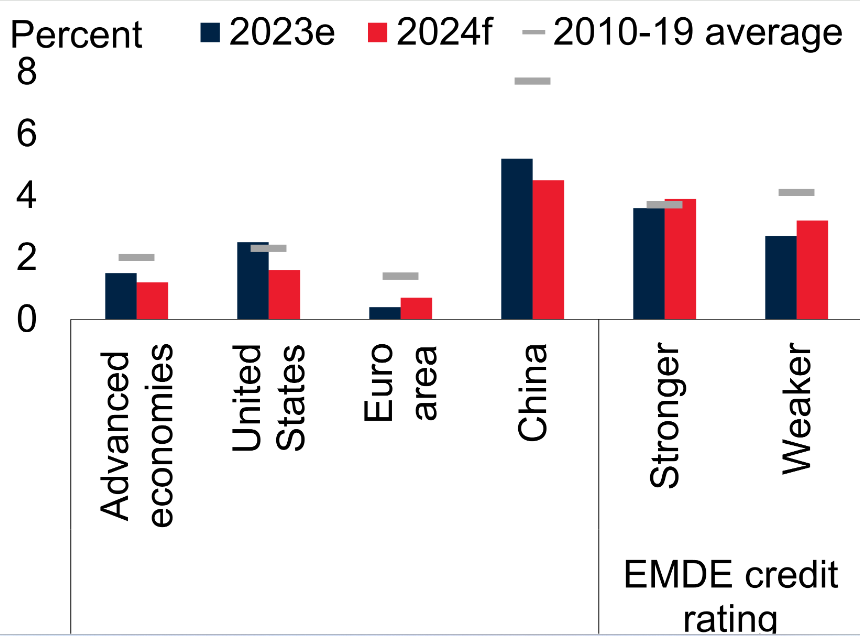
Global growth is set for the weakest half-decade performance in 30 years
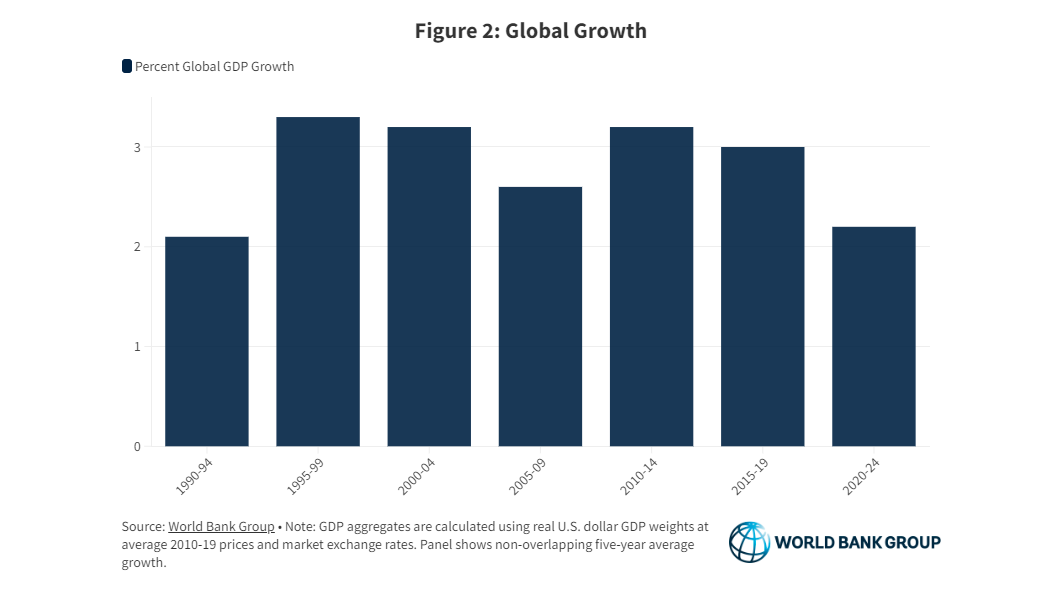
The recovery in global trade is feeble
Global trade growth was virtually stagnant in 2023, with goods trade contracting amid anemic global industrial production. Services trade continued to recover, but at a slower pace than previously expected. Overall, the recovery in global trade in 2021-24 is projected to be the weakest following a global recession in the past half-century. Geopolitical uncertainty, the possibility of a more protracted slowdown in China, and the prospect of further measures to restrict international trade pose downside risks to the trade outlook.
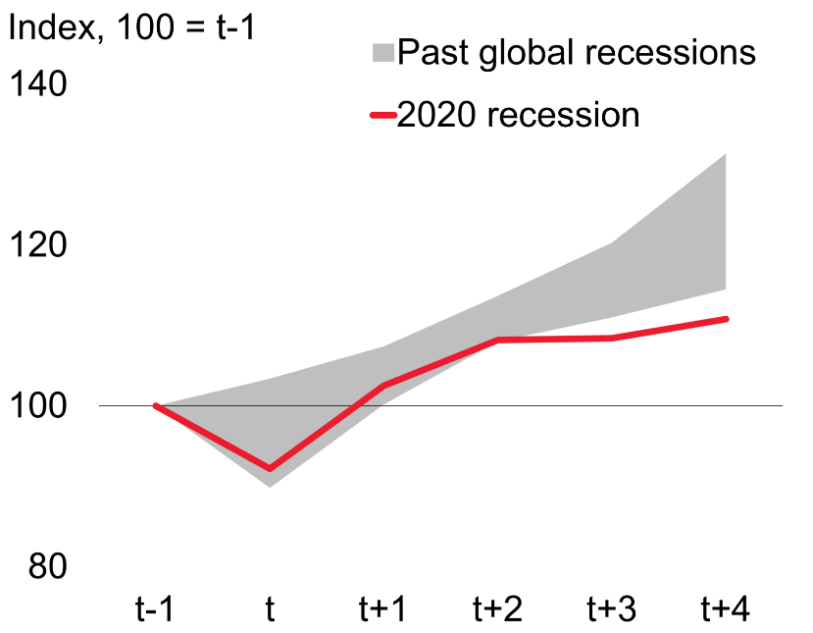
Progress in closing the gap in EMDE per capita income with advanced economies is expected to be limited
EMDEs are set to make limited progress catching up to advanced-economy levels of per capita income. Many vulnerable EMDEs are falling further behind—per capita income is forecast to remain below its 2019 level this year in one-third of low-income countries and more than 60 percent of economies facing fragile and conflict-affected situations.
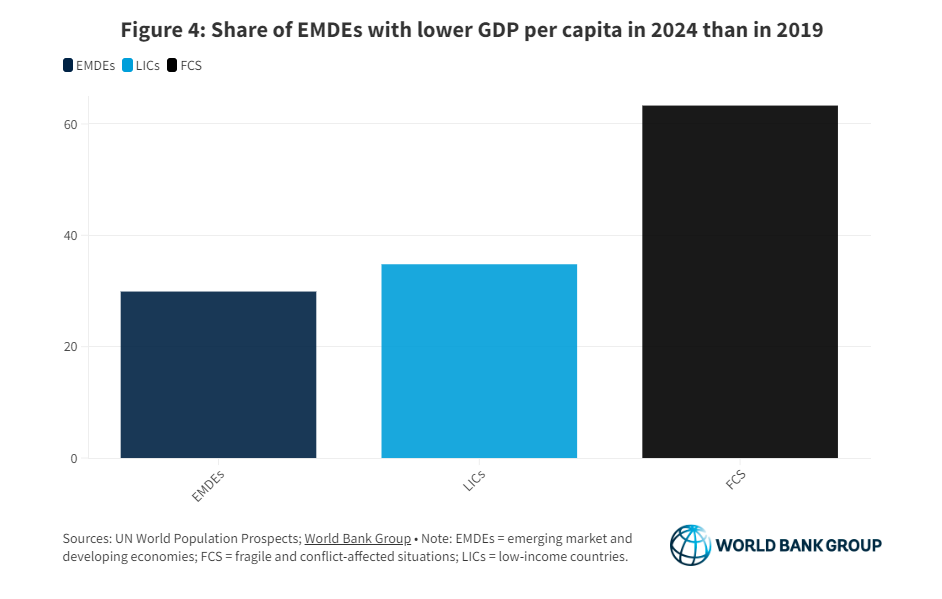
Growth would be even weaker if a number of downside risks materialized
There are several downside risks to the outlook—including the prospects of higher oil prices due to an escalation in geopolitical tensions, financial stress in EMDEs that leads to surging sovereign spreads, and weaker growth in China resulting in adverse global spillovers via commodity and other channels. In each case, global growth in 2024 would be reduced by 0.2 percentage point below the baseline. In contrast, an upside scenario with higher-than-expected U.S. growth could boost global growth by 0.2 percentage point this year.
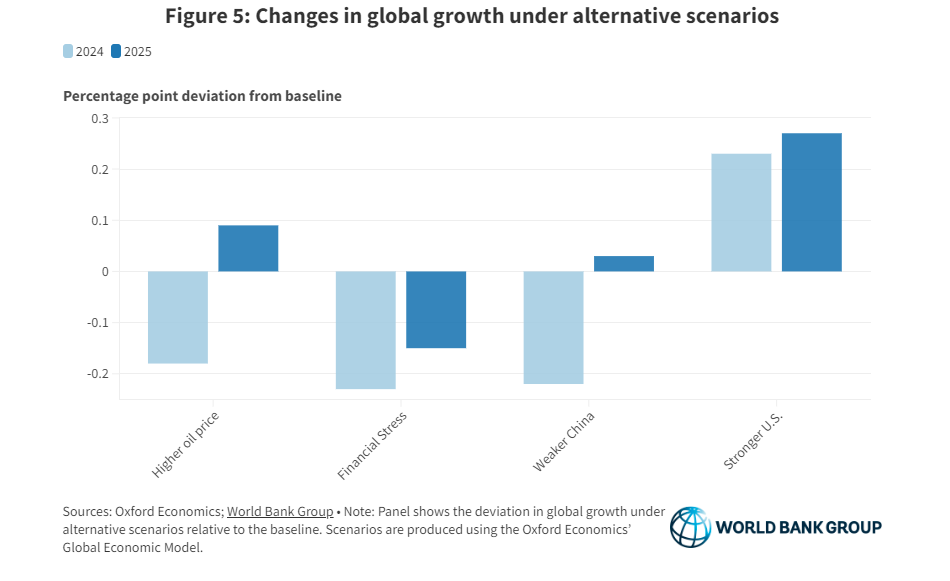

![$adHeader[0]['title']](https://bfisnews.com/images/bigyapan/1759825227_1100x100.gif)
















.jpeg)









प्रतिक्रिया